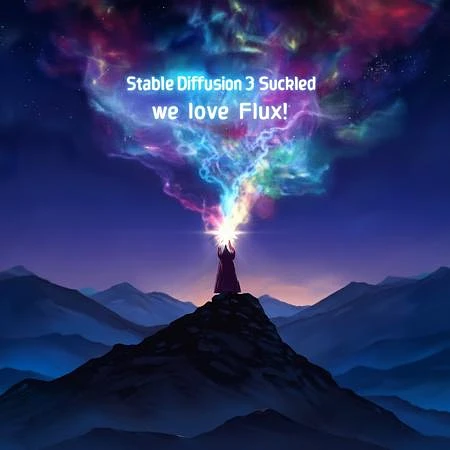LibreFLUX is a de-distillation of Flux Schnell, giving it quality on par with Dev, if not surpassing it, while maintaining the open Apache license. Currently it is undertrained but excels in prompt comprehension (improved with attention masking) and text. This is a Q5_k_m GGUF version for running on 12gb VRAM (maybe less, I have not checked). I will add more quants later.
To quote the original: LibreFLUX is an Apache 2.0 version of FLUX.1-schnell that provides a full T5 context length, uses attention masking, has classifier free guidance restored, and has had most of the FLUX aesthetic fine-tuning/DPO fully removed. That means it's a lot uglier than base flux, but it has the potential to be more easily finetuned to any new distribution. It keeps in mind the core tenets of open source software, that it should be difficult to use, slower and clunkier than a proprietary solution, and have an aesthetic trapped somewhere inside the early 2000s.
That being said the quality is amazing, Jimmycarter is underselling themselves heavily
Credit for the original LibreFLUX model goes to https://huggingface.co/jimmycarter/LibreFLUX
What is LibreFLUX GGUF (Schnell de-distilled)?
LibreFLUX GGUF (Schnell de-distilled) is a highly specialized Image generation AI Model of type Safetensors / Checkpoint AI Model created by AI community user Thatrandomjew. Derived from the powerful Stable Diffusion (Flux.1 S) model, LibreFLUX GGUF (Schnell de-distilled) has undergone an extensive fine-tuning process, leveraging the power of a dataset consisting of images generated by other AI models or user-contributed data. This fine-tuning process ensures that LibreFLUX GGUF (Schnell de-distilled) is capable of generating images that are highly relevant to the specific use-cases it was designed for, such as base model.
With a rating of 0 and over 0 ratings, LibreFLUX GGUF (Schnell de-distilled) is a popular choice among users for generating high-quality images from text prompts.
Can I download LibreFLUX GGUF (Schnell de-distilled)?
Yes! You can download the latest version of LibreFLUX GGUF (Schnell de-distilled) from here.
How to use LibreFLUX GGUF (Schnell de-distilled)?
To use LibreFLUX GGUF (Schnell de-distilled), download the model checkpoint file and set up an UI for running Stable Diffusion models (for example, AUTOMATIC1111). Then, provide the model with a detailed text prompt to generate an image. Experiment with different prompts and settings to achieve the desired results. If this sounds a bit complicated, check out our initial guide to Stable Diffusion – it might be of help. And if you really want to dive deep into AI image generation and understand how set up AUTOMATIC1111 to use Safetensors / Checkpoint AI Models like LibreFLUX GGUF (Schnell de-distilled), check out our crash course in AI image generation.
Popularity
Info
Version Q4_k_s: 1 File
About this version: Q4_k_s
Okay so Q4 is... not great. Q5 wasn't amazing but there is significant decrease in quality moving to q4_k_s.
Tomorrow I will start working upward with Q6!
2 Versions
Go ahead and upload yours!





